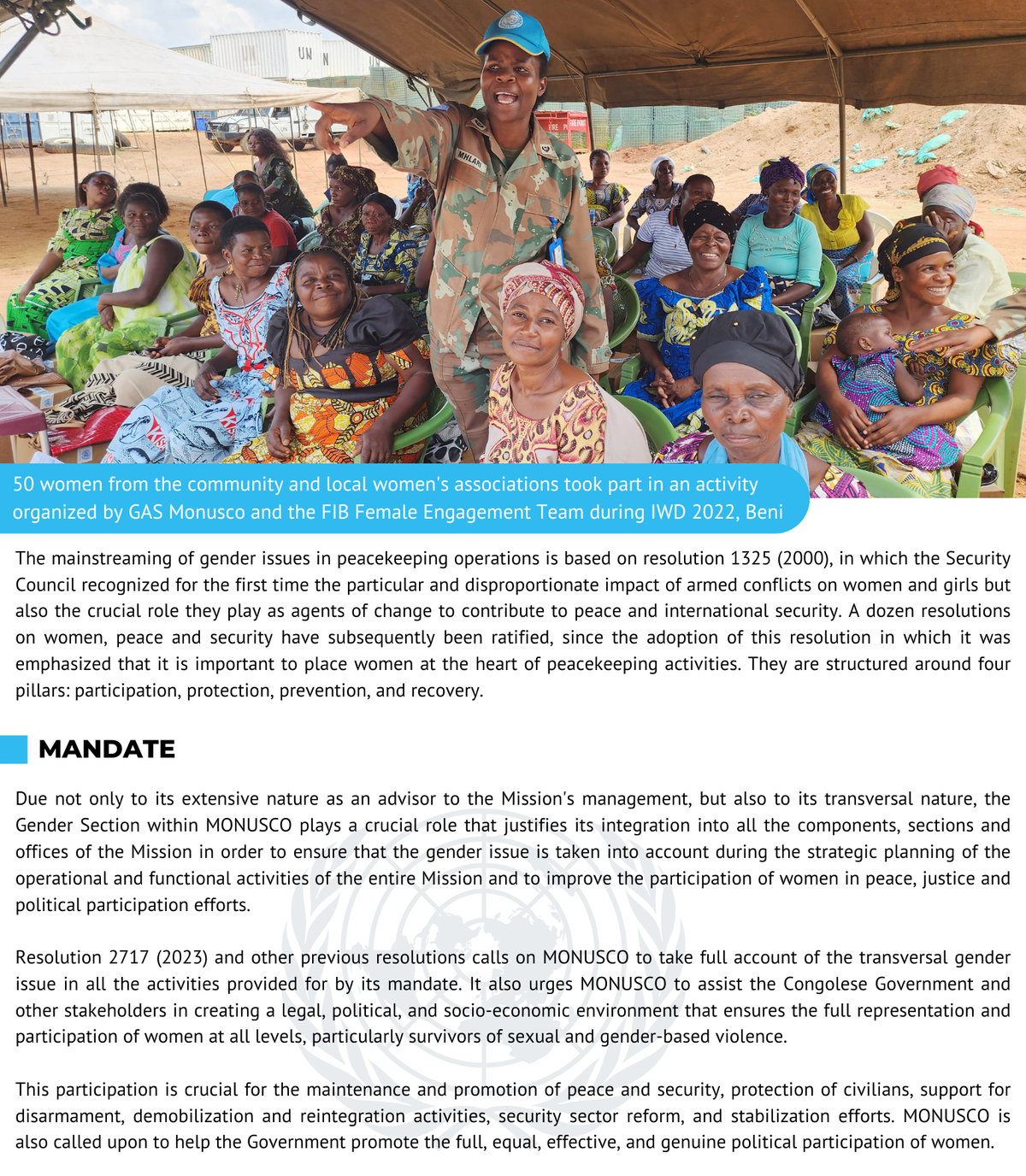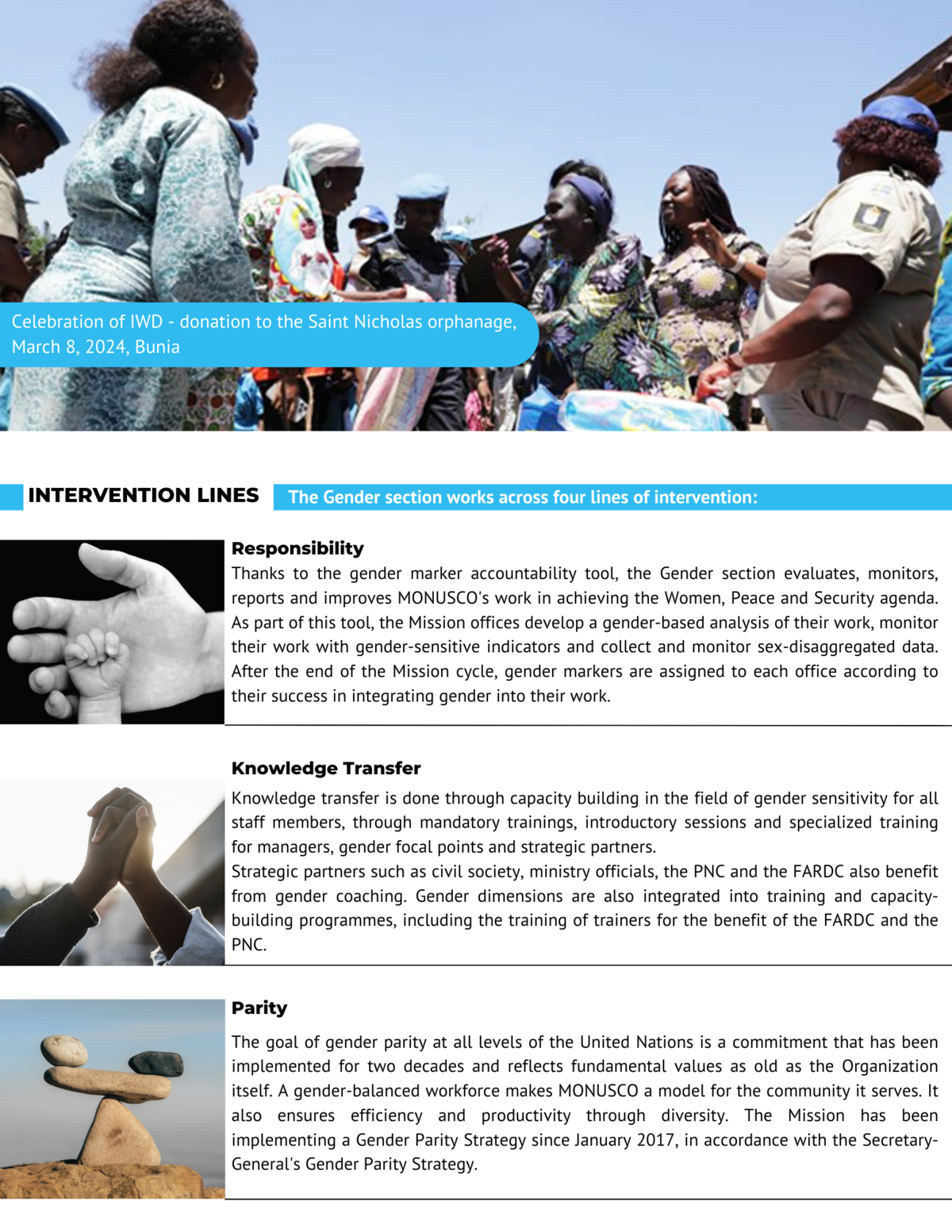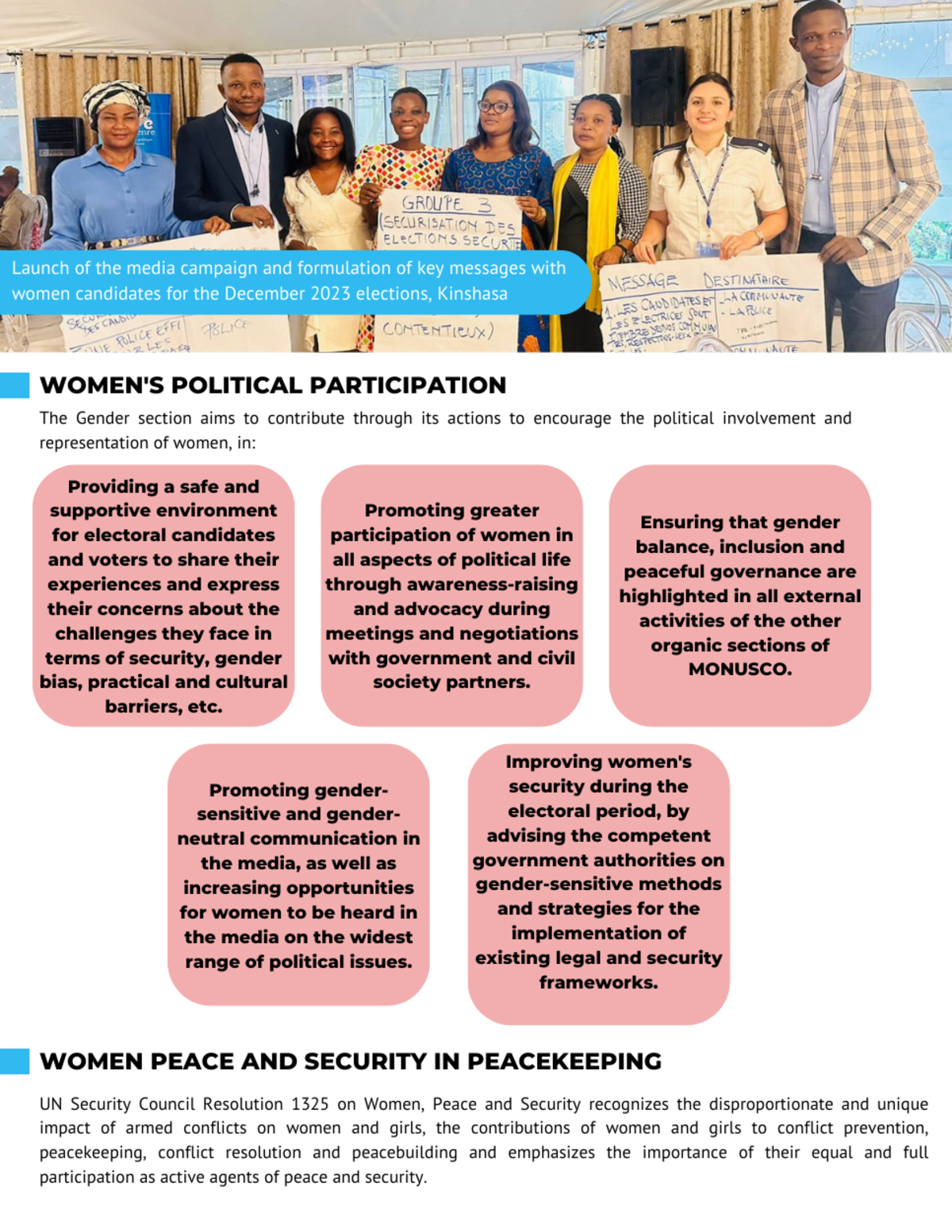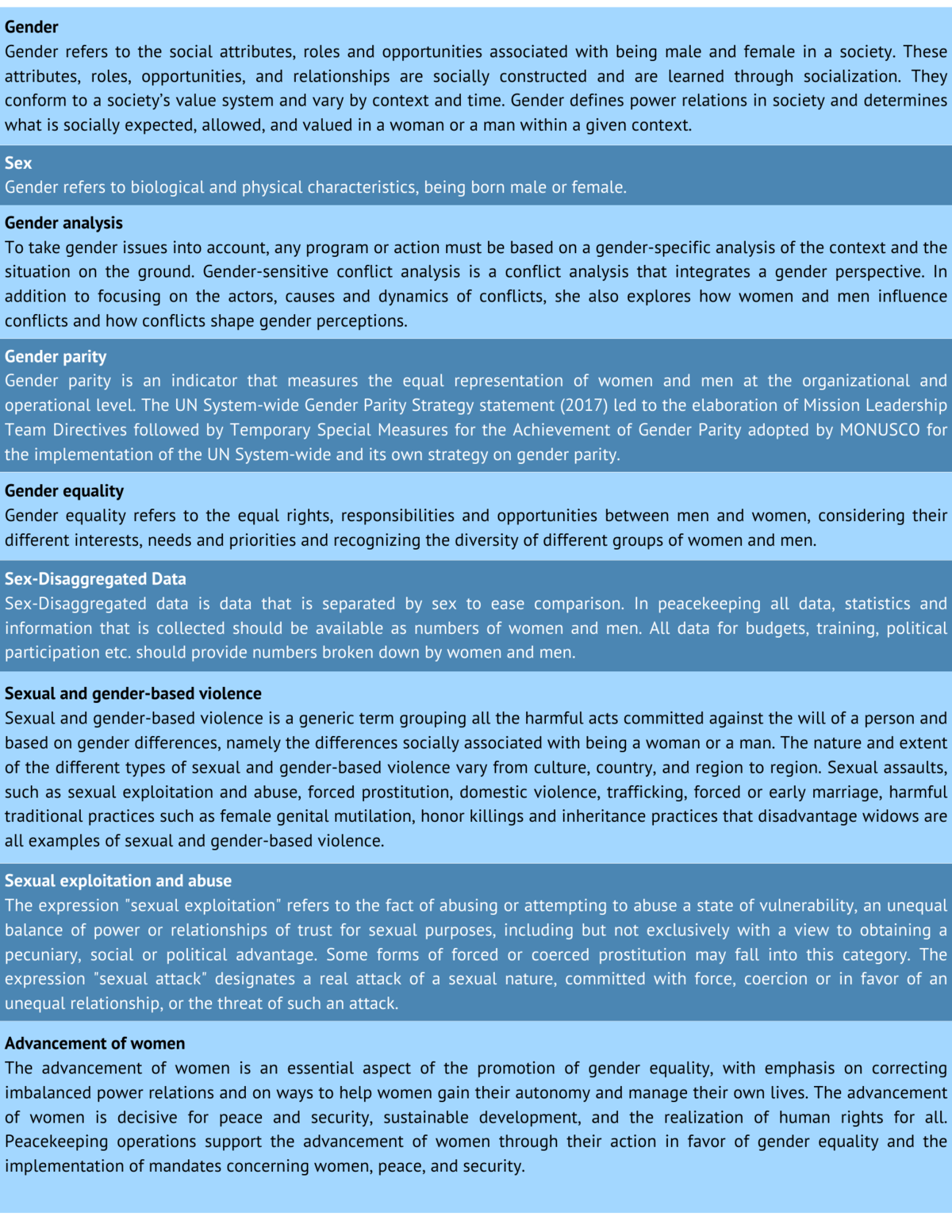





Mireille Laurier Affa'A Mindzie
SENIOR GENDER AFFAIRS OFFICER
Email : mireille.affaamindzie@un.org
Christelle Tunda
REPORTING AND COMMUNICATION OFFICER
Email : christelle.tunda@un.org

- L’Égalité des Genres et Les Femmes, La Paix et la Sécurité DOSSIER D’INFORMATION.pdf (adobe.com)
- 17-00102b_gender_strategy_report_13_sept_2017.pdf (un.int)
- pk_integratinggenderperspectiveunmilitarypeacekeeping_undpko_march2010_0.pdf (peacewomen.org)
- dpko-dfs-gender-strategy.pdf (un.org)

- Security Council resolution 1325 (2000) Women and Peace and Security
- Security Council resolution 1820 (2008) Sexual Violence
- Security Council resolution 1888 (2009) Protecting women & girls from sexual violence.
- Security Council resolution 1889 (2009) Improvement in women's participation in peace processes
- Security Council resolution 1960 (2010) Reiterates call to end sexual violence.
- Security Council resolution 2106 (2013) Affirms an “integrated approach” to sustainable peace.
- Security Council resolution 2242 (2015) Strategies and resources regarding the implementation of the WPS Agenda
- Security Council resolution 2493 (2019) Full implementation of all previous resolutions on WPS
- Security Council resolution 2666 (2022) Situation concerning the Democratic Republic of the Congo (MONUSCO)
- Security Council resolution 2717 (2023) Situation concerning the Democratic Republic of the Congo (MONUSCO)
 UN
UN United Nations Peacekeeping
United Nations Peacekeeping